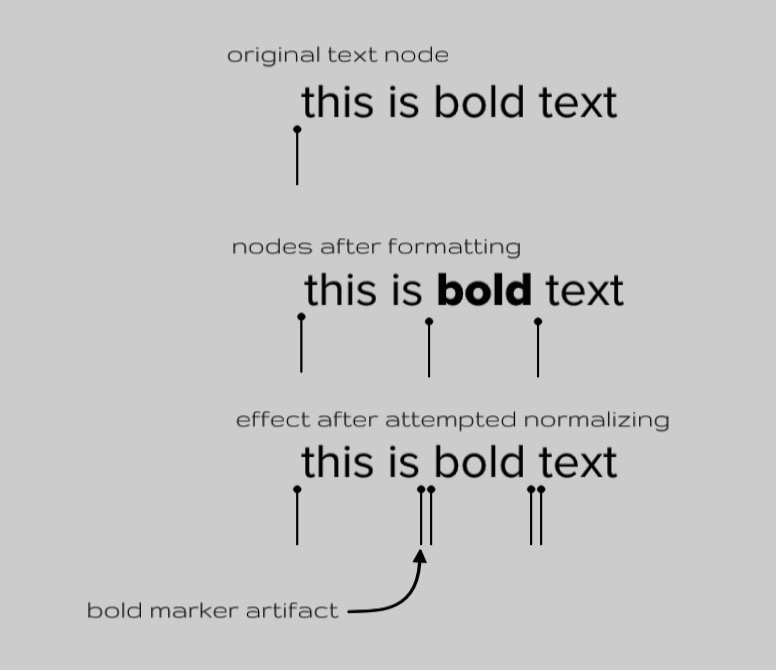I've run into the problem myself. I can offer opinions as to why, but they'd just be guesses.
My solution was to reselect ALL the text from the Text box and reset the font by switching to another font then back again (and then reformatting what I wanted). If you have other formatting variances (kerning, tracking, etc.) in specific words, that may make new nodes,etc. In my case, it's usually been these formatting nodes that have been problematic, particularly if I've done something to a specific word and then have tried to undo the formatting to that same specific node (e.g.: setting a bold word within a text and then changing my mind and unsetting the bold on that word again. When going to render, the bold would show up again in the render. I think the switch to another font for the entire selection trick clears out any superfluous nodes that might be residual.
(How I see it:

when unbolding a word should revert back to the original node, but it doesn't, it creates another level of inner nodes instead. If this happens, it's necessary to select through what would become the node boundaries and use the technique to reset nodes [sorry, I don't know how else to explain this.] Maybe you can see how the rendering process can mistake the boundary especially if it thinks that TextEdit should have cleared the boundary. It's obviously a bug that needs to be worked around. PS — the problem doesn't necessarily just need to be about Bold or Italic formatting, it could be anything like kerning, tracking, offsets, etc.)
Motion has exhibited several somewhat bizarre aberrations rendering to "share" in the last couple of releases — things that play perfectly in the canvas at any resolution/quality, etc... sometimes don't work in the render. In those instances, I've had to reinvent the entire way I approached the effect.
At any rate, when formatting text, it's best to lay in the entire text first (check your spelling!). Then carefully select and format the portions within that text. It should render out okay after that. (No promises.) If all else fails - use Proxima Nova, or a font you know is not duplicated anywhere else within the System (which Helvetica Neue is—it exists in the /Library/Fonts as well as /System/Library/Fonts folder.. If you've upgraded to El Capitan, you may have noticed that the new San Francisco System fonts are NOT available at the Application level unless you specifically install them yourself.)
Don't take any of what I've said as gospel — like I said: it's just a guess. I've had similar problems show up when just editing text sometimes, and getting certain actions to take effect... sometimes it's like Motion just does not want to cooperate (like when alignments get "stuck" working on only one line of a multi-line entry, [there's a little more to that situation but that's enough said]. ... there are a lot of little problems with the TextEdit tool inside Motion... mostly just minor ones—and there's no excuse what happens during the export render.)